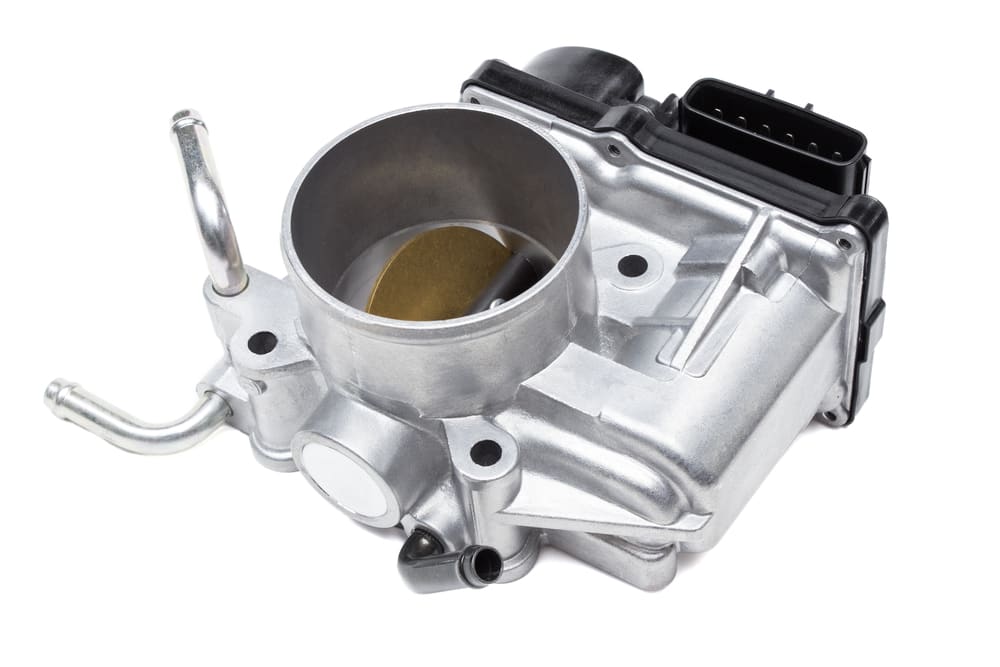

A throttle body temperature sensor is a critical component to your vehicle’s fuel injection system. It measures the temperature of the air/fuel mixture entering the fuel injection system on your vehicle’s engine. This is crucial: the temperature of the air/fuel charge entering an engine can largely impact the chemical reaction and your car’s performance.
In order for gasoline to be burned in an internal combustion engine, it must be atomized or broken into small particles, emulsified (mixed with air), and then vaporized. This all requires a meticulous combination of air and fuel at the right temperature, in the right environment, and in the right setting. Think of this as you are spraying any kind of liquid from an aerosol can (high pressure to low-pressure environment) into the air. As the particles are broken down, what we know as a fine spray is technically defined as “atomization.” With this in mind, the smaller the fuel particles are, the greater the surface area there is for them to be exposed to, thus creating more exposure to heat. This is where the performance of a throttle body temp sensor is important.
The throttle body temperature sensor monitors the throttle body temperature, which is essentially the same as the fuel temperature. This sensor provides the vehicle’s main computer with information on whether to enrich or lean out the fuel to air mixture based upon the temperature. This is specifically important in “hot start” situations due to the effect of the fuel vaporization as it relates to temperature. A throttle body temperature sensor may wear out over time and should be replaced by a professional mechanic if necessary. ## symptoms of a failing throttle body temperature sensor include:
1. Poor Engine Performance
When a temperature sensor relays incorrect information to the vehicle’s ECM (Engine Control Module), the ECM can sometimes make inaccurate corrections based upon misinformation as a result of a faulty sensor. The most noticeable symptom of this can be sluggish engine performance due to the ECM’s natural tendency to provide more fuel to the throttle body, resulting in a “richer than normal” air/fuel mixture. This is the equivalent of trying to drink too much water too fast without breathing in the interim; much like trying to drink water from a firehose. The human response to this (choking effect) would be somewhat similar to how an engine would respond when too much fuel is supplied without the proper balance of air. You may notice such engine performance issues when accelerating; the car will feel like it cannot “go” effectively.
2. Stalling while Idling
A faulty throttle body temp sensor may also contribute to stalling while idling. Due to the incorrect air/fuel mixture, the engine may fail briefly while the car idles. The stalling can be intermittent, but it could become more common as the part continues to fail. Have your engine functioning properly again by having the issue inspected by a mechanic as soon as possible.
3. Issues Starting the Engine
Another sign of a bad throttle body temp sensor is problems starting the engine. Though this can result from a number of causes, one of them can be an improper air/fuel mixture incited by a broken temperature sensor. In this case, the engine may be too hot for you to effectively start the car. It can be an occasional issue, but if it is accompanied by any of the other listed symptoms, it may be the throttle body temp sensor. Regardless, an overheating engine leading to starting problems should be investigated as soon as possible by a certified mechanic.
4. Broken Electrical Connections
Faulty electrical connections can also play a part in incorrect readings of temperatures being relayed to the vehicle’s ECM. As we all know, electrical problems can be a nightmare to diagnose, often times resulting in intermittent and unpredictable reactions, making them very difficult to trace. This can also be tested by using an Ohmmeter, which will identify whether or not the sensor’s resistance is within specifications.
When any of the above symptoms occur, there is somewhat of a domino effect created, in that this will likely cause multiple sensors and triggers to force your Check Engine Light to come on as a result of other systems failing. Frequently, when this happens, there will be several fault codes related to this, usually requiring the knowledge of an experienced mechanic to interpret and fix. Be sure to have a qualified mechanic diagnose the problem.



